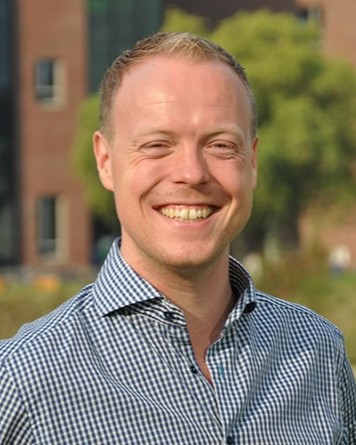Keynote Lecture

- Tina Kold Jensen (University of Southern Denmark, DK)
- Sunday, 8 September
- 18h00 – 19h00
Tina Kold Jensen is professor in environmental epidemiology and has studied adverse effects of exposure to endocrine disrupting chemicals and impact on both fetuses, children and adults. She the research leader in the Odense Child Cohort, in which more than 100 articles in peer reviewed journals have been published and more than 50 mill DK from external grants have been obtained. She is a member of expert committees in The Danish National Board of Health and The Danish Environmental Agency addressing the adverse health effects of PFAS exposure and knowledge gaps in PFAS and in WHO expert group to evaluate PFAS. In addition, she holds an ERC advanced grant addressing adverse health effects of PFAS exposure.
Per- and polyfluoroalkyl substances (PFAS) are a class of >8000 chemicals often used to make products resist water, stains and heat and they are therefore used in consumer products and are detectable in the environment worldwide making exposure to humans inevitable. Humans are primarily exposed through contaminated drinking water and food. PFAS cross the placenta and are excreted in breastmilk leading to exposure of the fetus and young child, who are especially vulnerable due to rapid growth and development. PFAS are absorbed from the gut and bind to serum proteins and accumulate mainly in the liver, kidney and blood. PFAS are measurable in serum from all humans and have a half-life of up to 5 years. PFAS exposure has been linked to a variety of diseases including cancer, liver and kidney problems, thyroid issues, birth defects, decreased immunity and other serious health problems. EFSA identified reduced response towards routine childhood vaccinations as a critical effect of PFAS exposure. The use of some PFAS have therefore been restricted by the Stockholm Convention, however, they have been replaced by others. A recent Danish review concluded that serum PFOS and PFOA increased from 1988 until the late 1990s followed by a decrease until 2021. A less clear time-trend were observed for the other PFAS.
An increasing number of hot-spot areas in which humans are exposed through contaminated water, soil or food have been reported which has raised public concern. No treatment has been available for high exposed individuals, however, a new study suggests that PFAS elimination can be enhanced in high exposed individual by administration of a bile acid sequestrant, which may be promising especially for women of reproductive age potentially limiting the exposure of the vulnerable fetus and next generation.
EUROTOX Lecture Award

- Juliette Legler (Utrecht University, NL)
- Monday, 9 September
- 08h30 – 09h30
In this presentation I will reflect on my experience in research in the field of endocrine disruption (ED), and how lessons learned in the ED field apply to the emerging field of micro- and nanoplastic (MNP) toxicology. I will highlight the challenges of studying endocrine disrupting chemicals and MNPs, and describe how developing innovative solutions to these challenges involves embracing complexity and forging connections between disciplines and stakeholders.
EUROTOX - SOT Debate


- EUROTOX Debater: Karsten Beekmann (Wageningen Food Safety Research, NL)
- SOT Debater: Tamara Tal (Helmholtz Centre for Environmental Health Research, DE)
- Monday, 9 September
- 13h00 – 14h00
Each year, the EUROTOX congress includes a debate in which leading toxicologists advocate opposing sides of an issue that has significant toxicological importance. The debate continues a tradition that originated in the early 1990s.
This year, the debaters will address the proposition, “Can the microbiome mediate the toxicity of environmental chemicals?” The debaters will provide an introduction to the intestinal microbiome and discuss how the community of microorganisms in our bodies could potentially influence the harmful effects of chemicals. Debaters will address questions such as
(1) “Are microbiome-induced changes in chemical concentrations toxicologically meaningful?”;
(2) “Are the effects of chemicals on the microbiome more important than the effects of the microbiome on chemicals?”;
(3) “Does person-to-person variability make it impossible for us to understand the impact of the microbiome on chemicals?”; and
(4) “Do model systems and organisms effectively reflect human microbiome-chemical interactions?”
In addition to inclusion as a Keynote Lecture at this meeting, this debate took place already (with the debaters having taken the reverse positions) in Salt Lake City, US, during the 2024 SOT Annual Meeting, March 10–14.
SOT Merit Award Lecture

- David L. Eaton (University of Washington, US)
- Tuesday, 10 September
- 08h30 – 09h30
My 40+ year research career has focused primarily on the role of biotransformation and disposition as a determinant of chemical carcinogenicity, although my graduate work in the late 1970s was focused on membrane transporters—there were only three known hepatic xenobiotic transporters then: organic anion, organic cation, and “neutral” (ouabain) transporters. A search of “liver transporter” in the Human Protein Atlas now lists 349 different genes!
I also was fascinated by the role of the then recently discovered cytochrome P450 enzymes—there were only two known at the time: cytochrome P450 and cytochrome P448. We know now of 58 different human CYP genes. But much of my early career research focused on the glutathione S-transferase (GST) family of genes. I was fascinated by the discovery that the potent rat liver toxin and carcinogen, aflatoxin B1 (AFB), was not carcinogenic at all in adult mice but was one of the most potent known rat carcinogens.
After several years of work in my new lab, we cloned a GST gene in the mouse that conferred nearly complete resistance to the genotoxic effects of AFB (mGstA3). We subsequently showed that there was an orthologous gene in the rat, rGSTA5, that had high activity toward the genotoxic AFB,8,9-oxide (AFBO) but was not constitutively expressed in the rat liver. But we could turn the rGSTA5 gene on with sulforaphane—present in broccoli and other cruciferous vegetables. We then showed that feeding rats broccoli protected them from AFB genotoxicity/carcinogenicity. We also found that none of the human alpha-class GSTs had any measurable activity toward AFBO, suggesting that humans—relative to rodents—might be highly susceptible to AFB hepatocarcinogenesis, but we found that the human Mu class GSTM1, which is highly polymorphic in the human population, had small but measurable activity toward AFBO. We then showed that human-isolated hepatocytes that were GSTM1-null had about three times more AFB-DNA adducts compared to human hepatocytes that were GSTM1-positive.
Although several studies at the time found that human CYP3A4 had the highest activity of any P450 in human liver toward activating AFB to AFBO, we showed that human CYP1A2 was actually more important—it had a much lower Vmax than CYP3A4 but had a much higher affinity (lower KM). Thus, at the low concentrations encountered in the human diet, virtually all activation of AFB to AFBO occurred by CYP1A2, not CYP3A4.
More recently, I’ve been interested in how adverse outcome pathway approaches to risk assessment can do a much better job of estimating human health risks from potential carcinogens and provide a more valid approach to incorporating known species differences between rats, mice, and humans in estimating potential health risks. I will explore two such examples—the importance of using human-based toxic equivalence factors for estimating risk of dioxins and dioxin-like compounds and the importance of species differences in DNA repair in estimating human health risks of the potent rat liver carcinogen, N-nitrosodimethylamine (NDMA), recently found as a contaminant in numerous pharmaceuticals.
HESI CITE Lecture

- Shana Sturla (ETH Zuerich, CH)
- Tuesday, 10 September
- 13h00 – 14h00
Keynote Lecture

- Ulla Birgitte Vogel (Technical University of Denmark, DK)
- Wednesday, 11 September
- 08h30 – 09h30
Nanotechnology was the big innovation potential at the turn of the century. Now, more than two decades later, there is scientific consensus that nanosized particles are more hazardous to inhale than larger particles with the same chemical composition. This is especially true for insoluble particles. Inhalation of nanomaterials has been linked to increased risk of cancer, fibrosis and cardiovascular disease, also in AOPs. In addition, some high-aspect-ratio nanomaterials, such as some carbon nanotubes, have asbestos-like properties and are potent carcinogens.
In the presentation, examples of health-based occupational exposure limits will be presented for the process-generated nanoparticle diesel engine exhaust, for insoluble nanoparticles such as carbon black and titanium, for the asbestos-like carbon nanotubes and for ZnO, a soluble nanoparticle.